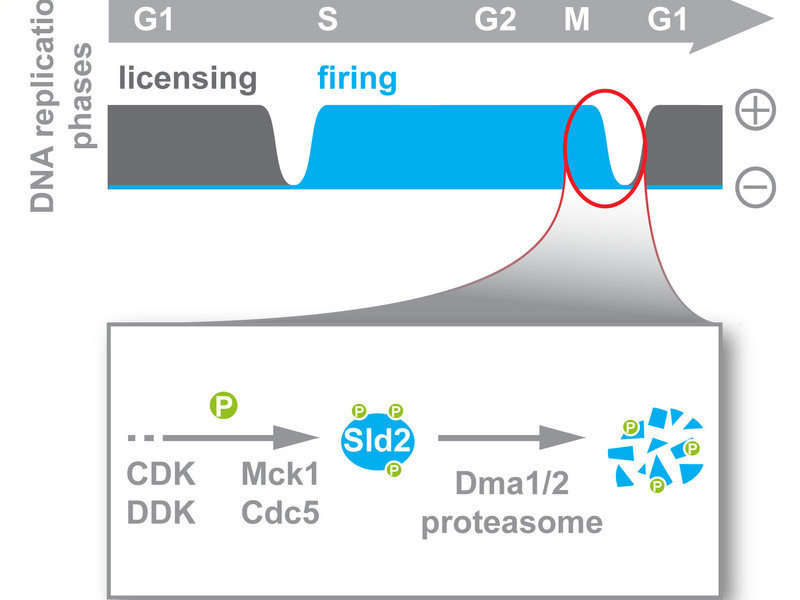DNA Replication – Take a break

Before a cell divides, it must first handle a large-scale project: Its entire genetic material has to be duplicated so that each of the two daughter cells is equipped with a full copy after cell division. As errors in this DNA replication could lead to the death of the cell, the process is rigorously controlled. It takes place in two phases. Researchers at the Max Planck Institute of Biochemistry in Martinsried have now revealed in the journal Cell Reports that these two phases are strictly separated from one another by breaks, thereby preventing errors in the DNA replication.
Elbphilharmonie, Berlin Airport, Stuttgart 21 – large-scale projects are frequently susceptible to errors and these are generally very cost-intensive. A cell’s most important large-scale project is the replication of its DNA, i.e. the complete duplication of its genetic material. Here, errors such as the inadvertent multiplication of a DNA sequence can change the structure of the chromosomes. This can lead to cell death or, in the case of multi-cellular organisms such as humans, to the development of cancer. For this highly important project, the cell increases its success rate by dividing the process of DNA replication into a planning phase, known as the “licensing” phase, and an implementation phase, known as the “firing” phase. The two phases follow in sequence. Boris Pfander, head of the “DNA Replication and Genome Integrity” research group, and his team have demonstrated that the baker’s yeast S. cerevisiae separates the timing of these phases from one another and that the Sld2 protein plays an important role in this regulation. “A crucial factor in the success of the DNA duplication project is, on the one hand, that project planning is completed before the building work begins, but also that no new plans are made while the actual building work is being carried out,” Pfander explains.
